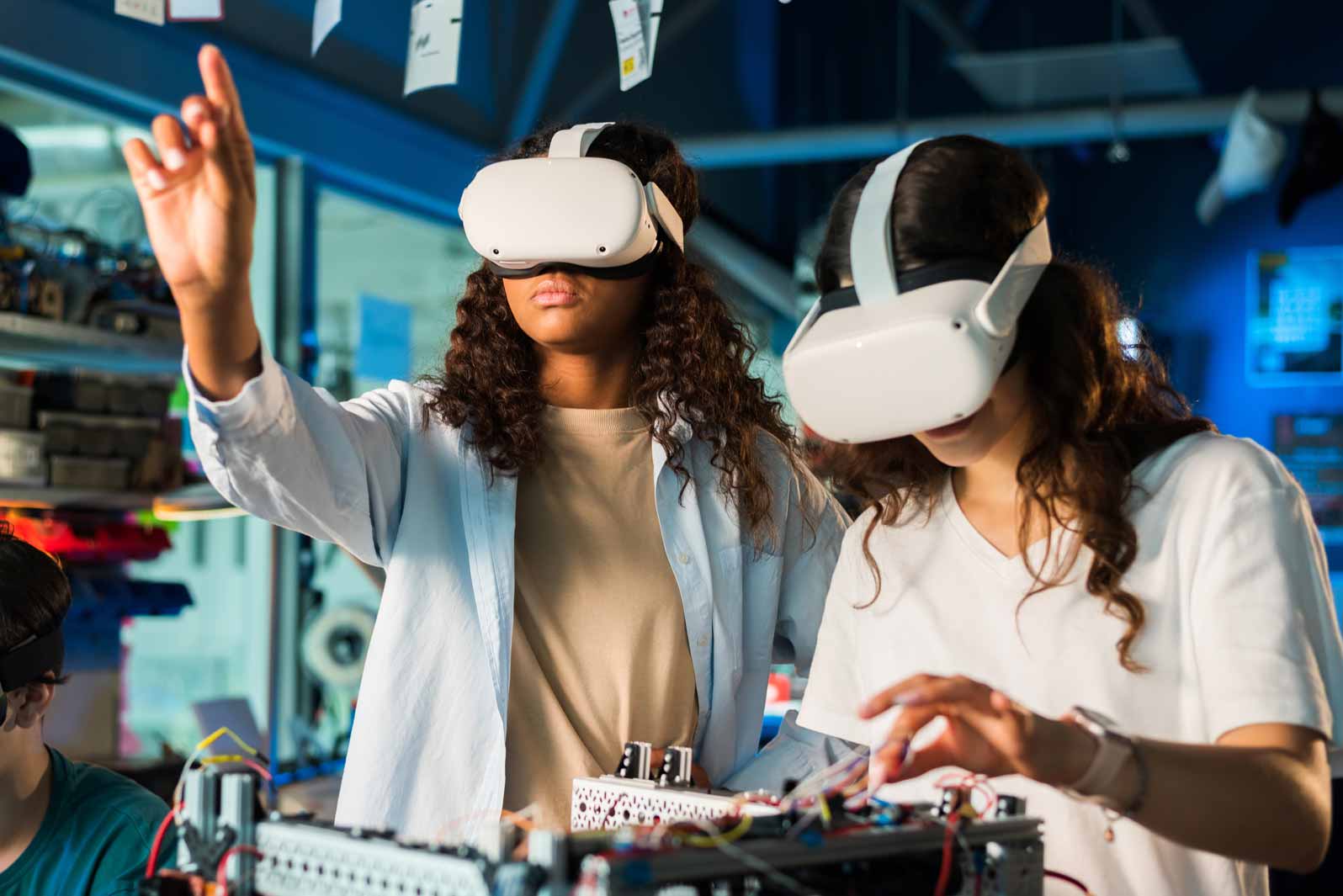In recent years, integrating virtual reality (VR) and augmented reality (AR) technologies into web experiences has revolutionized how users interact with digital content. WebXR, an emerging standard for immersive web experiences, enables developers to create captivating VR and AR applications that run directly in the browser without additional plugins or downloads. At Bluedot Marketing, we recognize the immense potential of WebXR in enhancing user engagement and delivering immersive brand experiences. In this article, we’ll explore the concept of WebXR and discuss its implications for businesses seeking to create compelling online experiences.
Understanding WebXR
WebXR, short for Web Extended Reality, is a set of standards and APIs that enable developers to create immersive virtual and augmented reality experiences that run directly in web browsers. By leveraging WebXR, developers can seamlessly integrate VR and AR content into websites, allowing users to interact with 3D models, explore virtual environments, and experience rich multimedia content without needing specialized hardware or software installations. WebXR is compatible with many devices, including desktop computers, smartphones, and VR headsets, making it accessible to a broad audience.
Benefits of WebXR for Businesses
1. Enhanced User Engagement: WebXR enables businesses to create interactive and engaging experiences that captivate users’ attention and leave a lasting impression. By immersing users in virtual environments or overlaying digital content in the real world through AR, businesses can create memorable brand experiences that drive engagement and foster brand loyalty.
2. Accessible Across Devices: One of WebXR’s critical advantages is its cross-platform compatibility, which allows users to access immersive experiences across various devices and platforms. Whether browsing on a desktop computer, smartphone, or VR headset, users can seamlessly access WebXR content directly from their web browser, eliminating the need for specialized hardware or software installations.
3. Increased Reach and Accessibility: By delivering immersive experiences through the web browser, businesses can reach a wider audience of users without the barriers associated with traditional VR or AR applications. With WebXR, users can access immersive content with a single click, making it easier for businesses to connect with their target audience and drive engagement.
4. Cost-Effectiveness: Unlike traditional VR or AR development, which often requires significant investment in hardware, software, and development resources, WebXR offers a more cost-effective solution for businesses looking to create immersive experiences. By leveraging existing web technologies and standards, businesses can reduce development costs and accelerate time-to-market for immersive web experiences.
5. Analytics and Insights: WebXR provides businesses with valuable analytics and insights into user behaviour, allowing them to track engagement metrics, user interactions, and performance data. By analyzing this data, businesses can gain deeper insights into user preferences and behaviour, optimize their immersive experiences, and drive better results.
Practical Tips for Implementing WebXR
1. Choose the Right Tools and Frameworks: Select the appropriate tools and frameworks for developing WebXR experiences based on your project requirements and technical expertise. Popular frameworks such as A-Frame, Three.js, and Babylon.js provide powerful tools and libraries for creating immersive web experiences.
2. Optimize Performance: Ensure your WebXR experiences are optimized for performance to deliver smooth and responsive interactions across various devices and platforms. Minimize load times, optimize asset sizes, and implement efficient rendering techniques to ensure a seamless user experience.
3. Focus on User Experience: Prioritize user experience in your WebXR designs, ensuring that interactions are intuitive, responsive, and user-friendly. Consider the user’s environment and context when designing immersive experiences and provide clear instructions and guidance to help users navigate the virtual environment.
4. Test Across Devices: Test your WebXR experiences across various devices, browsers, and platforms to ensure compatibility and functionality. Pay attention to performance, usability, and visual fidelity, and iterate based on user feedback and testing results.
5. Promote Your WebXR Experiences: Once your WebXR experiences are live, promote them through your website, social media channels, and marketing campaigns to drive awareness and engagement. Encourage users to share their experiences, provide feedback, and use analytics data to track performance and measure the impact of your immersive web experiences.
WebXR represents a transformative opportunity for businesses to create immersive and engaging web experiences that captivate users’ attention and drive meaningful engagement. By leveraging WebXR, businesses can deliver immersive VR and AR content directly through the web browser, reaching a wider audience of users and delivering memorable brand experiences.
As a forward-thinking digital marketing agency, we’re committed to helping businesses harness the power of WebXR to create compelling online experiences that drive results and differentiate their brand in an increasingly competitive landscape. Contact us to learn more about our web design services, and let’s take your website to the next level.






